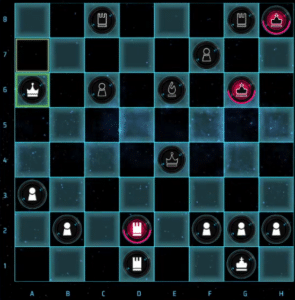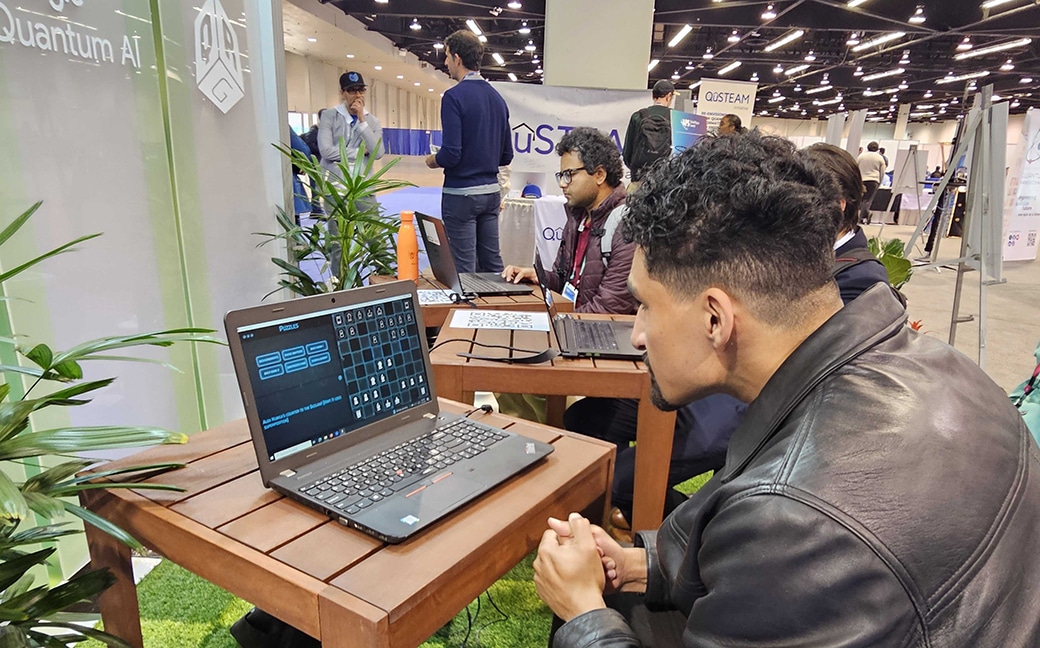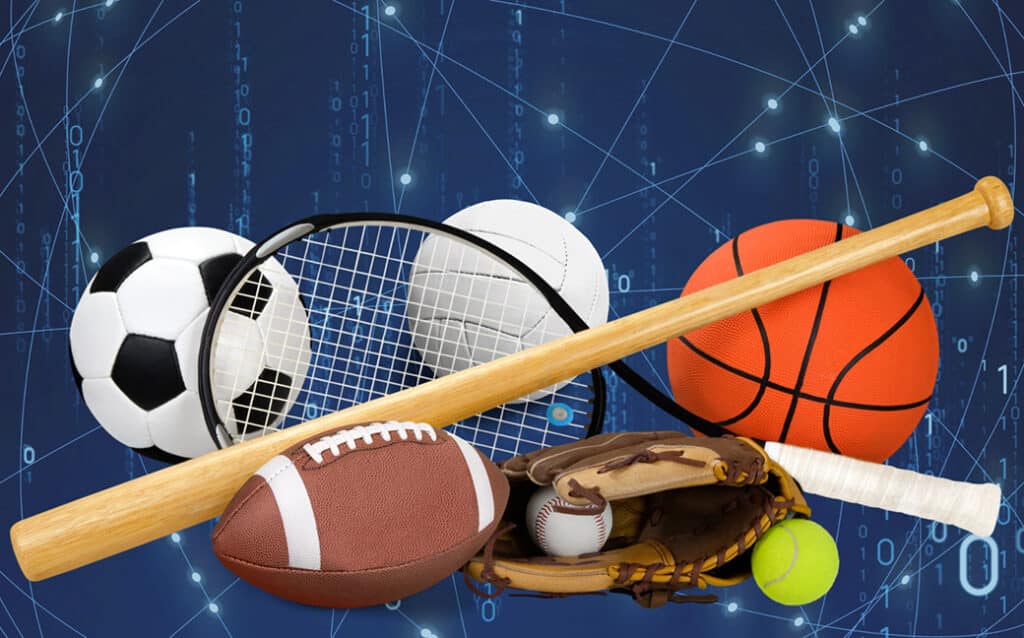From the topological to the philosophical, this year’s APS Global Physics Summit illuminated novel perspectives on how quantum computing can transform our understanding of the universe and how quantum ideas can play a role in our everyday lives.
With the largest physics research conference in the world happening in Anaheim – right in HKA’s backyard – I couldn’t pass up the opportunity to meet some of the brilliant scientists deciphering the quantum puzzles that will unlock the next era of science and technology.
After following many of these innovators for years through their papers and videos, I was eager to participate in discussions about their work in person. These interactions engendered a deeper understanding of quantum information science, as well as new ideas on how to communicate it to media.
Better data, better drugs
It was a pleasure to meet Microsoft’s Krysta Svore following her presentation on how to get the most from reliable quantum computers, which was supported by easily comprehensible graphs. By showing how algorithmic progress has outpaced hardware developments, her research suggested that improvements in quantum algorithms could be the key to scaling quantum devices, a point not often emphasized. She also described how quantum computers will provide access to datasets that were previously inaccessible classically, enabling faster and more accurate AI models for chemistry and other scientific applications.
Supporting the development of hybrid quantum supercomputing for chemistry was NVIDIA’s Marwa Farag, who I’ve followed since 2022 in her work on materials simulation at Ford. Her talk began with a slide that simply stated, “NVIDIA is NOT building a quantum computer.” Rather, the company focuses on integration with accelerated computing and AI, developing hybrid applications that utilize quantum computers in tandem with GPUs.
Marwa introduced a novel quantum machine learning model for generating new molecules with specific desired physicochemical properties. Distributing training data across multiple GPUs trained the model faster with a large number of data points, enabling an approach for targeted molecular generation that could make drug design faster and cheaper.
Cat videos
On the hardware side, Ulysse Reglade at Alice & Bob is improving the ability to control cat qubits, a type of superconducting qubit that naturally suppresses bit flip errors. By building qubits that are inherently protected against this type of error, the researchers were able to achieve record stability, improving bit-flip lifetimes by four orders of magnitude.
Ulysse’s presentation was marked by an especially helpful animated video of a mechanically driven pendulum, representing the mechanism that stabilizes cat qubits. When one of the weights of the pendulum was pushed by an outside force, the mechanism returned it to the stable state in sync with the other weights. Similarly, when a cat qubit is affected by noise from the external environment, the autonomous stabilization mechanism restabilizes the qubit, making it more resistant to this type of error.
Fostering Diversity in the Quantum Workforce
Megan Ivory of Sandia National Laboratories and Emily Edwards of Duke University delivered presentations that stressed the value of educational programs and mentorship for developing the quantum workforce and increasing diversity in the field of quantum tech. While there are relatively few women in physics, there are even fewer in quantum physics – and Megan and Emily intend to change this through programs like QuanTime, which build educational pathways from K-12 to workforce.
Megan explained the importance of developing skills and interest in quantum at all levels, reaching across backgrounds to grow the industry. It’s never too early or late to learn quantum, whether it’s teaching educators how to explain quantum to elementary-aged students, developing trade programs, or connecting non-science majors to careers in quantum business or communications. Meanwhile, Emily attributes her own quantum journey to her rich lineage of mentorship going back to Katharine Burr Blodgett, the first woman scientist at GE and the first woman to be awarded a Ph.D. in physics from the University of Cambridge.
A Measured Approach to Chess and Life
Another emerging method to introduce quantum to children and adults alike is through games like chess and Tic-Tac-Toe. Quantum Realm Games is developing quantum chess, an incredibly innovative take on the classical game of chess, but with the added abilities of using the quantum principles of superposition and entanglement to increase the possibilities of moves. By putting a piece in a superposition of multiple squares, you don’t know exactly where it is on the board until you measure it. If you thought chess really made you think, imagine adding quantum probabilities on top of the seemingly endless possibilities of normal chess. But with simple to more complex puzzles and an AI to help me learn, I began to get the hang of it.

My conversations with the team behind the game – Chris Cantwell, Ricardo Olenewa and Spiros Michalakis – extended from gameplay to intriguing thought experiments like “How would you communicate quantum mechanics to someone living thousands of years ago?” Spiros, a professor at CalTech, said he would begin by communicating the idea of “perspective,” starting with how we view 3-dimensional space, then suggesting the possibility of viewing time from different perspectives or looking backwards through time. This led to a more personal discussion of how perspectives shift your interpretations and measurements of the observable world. For example, your emotional state can entirely shift your interpretation of someone’s words: the exact same message could be interpreted in a positive or negative way depending on the recipient’s emotional state. Much like how the emotions of the reader affect a message, measurements of quantum systems are affected by their observers.
The discussions and presentations at APS made me consider how I communicate quantum science to my friends and the media alike. With concrete comparisons, analogies and exposure through education and the media, quantum computing will continue to spread to the public. And as quantum technology unlocks new applications and ways to think about the universe, it’s sure to improve the ways we communicate about the technology itself.




